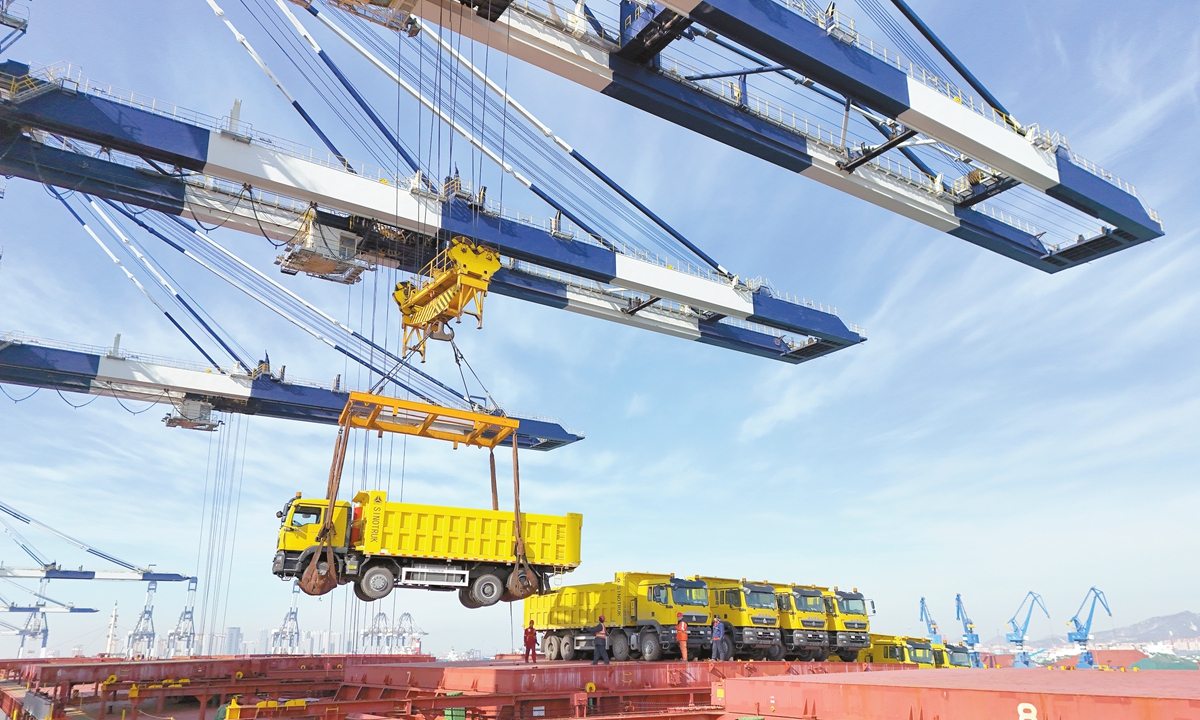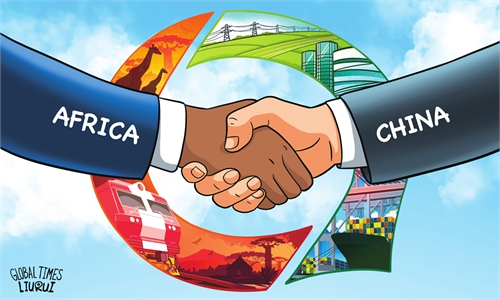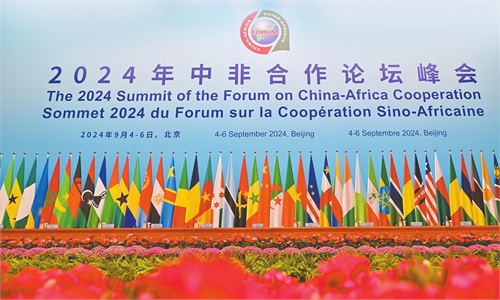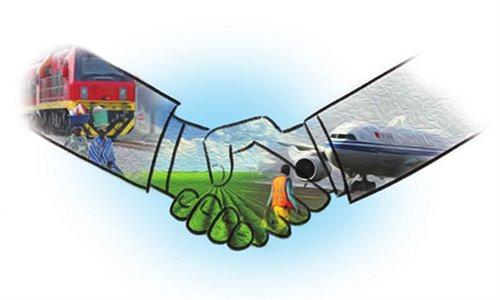
Engineering vehicles exported to Guinea are loaded onto the China-Africa liner at Yantai Port, East China's Shandong Province, on January 25, 2024. Photo: VCG
Editor's Note:
In today's world, where the futures of all countries are closely linked, development, security and civilization play important roles in promoting the modernization process of human society. The Global Development Initiative, Global Security Initiative and Global Civilization Initiative, proposed by Chinese President Xi Jinping, offer profound insights into the issues of our time. The Global Times invites scholars to provide readers both at home and abroad with an in-depth understanding of these three initiatives. This is the first article in the series.
The just-concluded 2024 Summit of the Forum on China-Africa Cooperation (FOCAC) was a significant event dedicated to discussing plans for deepening friendly cooperation between China and Africa in the new era. Since its establishment in 2000, FOCAC has witnessed the enduring and strengthening friendship between China and Africa, promoting mutual achievements and shared development. On September 21, 2021, President Xi Jinping attended the general debate of the 76th session of the United Nations (UN) General Assembly in Beijing via video link. He delivered an important speech and officially proposed the Global Development Initiative (GDI), to put development high on the global macro policy agenda and speed up the implementation of the UN 2030 Agenda for Sustainable Development. Today, as the friendship between China and Africa transcends time and space, overcoming vast distances, both sides are advancing together, marching down the broad path toward the shared dream of modernization.
The joint efforts of China and Africa in promoting an open and win-win modernization are a vivid embodiment of the GDI. From the daily lives of ordinary people to the modernization journeys of nations, it is clear that the GDI represents a significant and tangible achievement that unites international consensus and promotes shared global development.
Advancing together with a focus on development
In my over 40 years of work related to Africa, I have participated in the preparation and hosting of numerous FOCAC-related meetings and have witnessed the continuous strengthening of China-Africa relations through friendly cooperation and mutual benefit. I firmly believe that regardless of how the international landscape changes, China-Africa cooperation will continue to grow stronger and become more robust.
On this journey of cooperation, the pursuit of development, revitalization and the shared dream of modernization serve as guiding milestones. Both China and Africa are united in their aspirations for modernization, their belief in solidarity and cooperation, and their hope for a better future. Joining forces for development is key to achieving these shared goals. China as the world's largest developing country, and Africa, the continent with a high concentration of developing counties, face common challenges. The China-proposed GDI addresses the most urgent issues facing developing countries by focusing on development and emphasizing cooperation. In the broader context of bridging the global development gap and revitalizing international progress, this initiative has infused China-Africa cooperation with strong momentum. Both sides are now working together to build a model for implementing the GDI.
Africa's strong desire for modernization and its long-term focus on peace and prosperity align closely with the GDI. This alignment demonstrates that China-Africa cooperation resonates deeply in terms of shared values and coordinated progress. As a key driver of global development, China offers its wisdom and solutions through the GDI and other international public goods to address global challenges and promote sustainable development. Implementing these Chinese solutions presents unprecedented opportunities for China-Africa cooperation and development, accelerating their shared progress in the new era.
Deepening cooperation: a continuous historical journey
At the 2024 FOCAC summit, leaders from China and Africa gathered to discuss cooperation and future prospects under the theme "Joining Hands to Advance Modernization and Build a High-Level China-Africa Community with a Shared Future." This summit has generated significant momentum for modernization efforts and has accelerated the transition of the GDI from broad concepts to detailed implementation.
In the 1950s and 1960s, the first generation of leaders from the People's Republic of China and early African leaders launched a new era in China-Africa relations. Since then, China and Africa have supported each other and fought together against imperialism, colonialism and hegemony, establishing a deep and lasting friendship. From the 1970s until the end of the century, China and Africa achieved mutual development in trade, investment and other areas.
Since the beginning of the 21st century, especially in the new era, China-Africa cooperation has continuously strengthened in a comprehensive and multi-level manner. Since 2013, President Xi has visited Africa five times, attended two FOCAC summits and frequently met with African leaders. The relationship has evolved from the idea that China and Africa have always been a community with a shared future to joining hands to advance modernization and build a high-level China-Africa community with a shared future, continuously opening new chapters in their cooperative history and expanding the prospects for their relationship.
Injecting new momentum into modernization
During my time working in Africa, I remember that one of the biggest health risks for Africans at the time was malaria. With limited treatment options, many relied almost obsessively on traditional quinine, despite its side effects, which could lead to miscarriages. At that time, China produced a drug called Cotecxin domestically. In a remote village in Kenya, a woman suffering from malaria had lost two opportunities to become a mother due to quinine. She then sought help from a Chinese medical team and switched to the Chinese-made Cotecxin. A miracle happened after just three treatment courses. Not only was the malaria under control, but she also successfully gave birth to a boy. To honor the Chinese medication, she named her child Cotecxin.
Cotecxin played a crucial role in combating malaria in Africa and it is more widely known as artemisinin. Today, the supply model for artemisinin has shifted from being solely provided by China to local production and supply within Africa. This represents a vivid example of building a China-Africa health community.
After nearly 70 years of diligent efforts, China-Africa relations are now at their most favorable point in history. Today, the intensity of exchanges and the breadth and depth of cooperation between China and Africa are unprecedented. The concept of building a community with a shared future is becoming increasingly rich, and both sides are achieving impressive results through the high-quality development of the Belt and Road Initiative and the implementation of the GDI.
It is believed that the more than 2.8 billion people of China and Africa, united in solidarity and working together, can harness immense power to jointly promote a peaceful, secure, prosperous and progressive future for the world. The shared dream of modernization between China and Africa is set to ignite a wave of modernization across the Global South and open a new chapter in building a community with a shared future.
The author is former Chinese vice minister of commerce and executive deputy director of the China Center for International Economic Exchanges. opinion@globaltimes.com.cn



